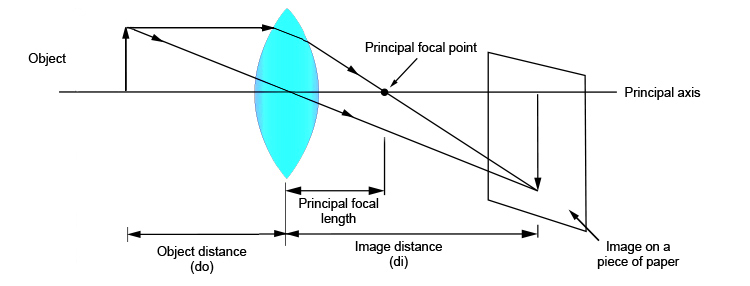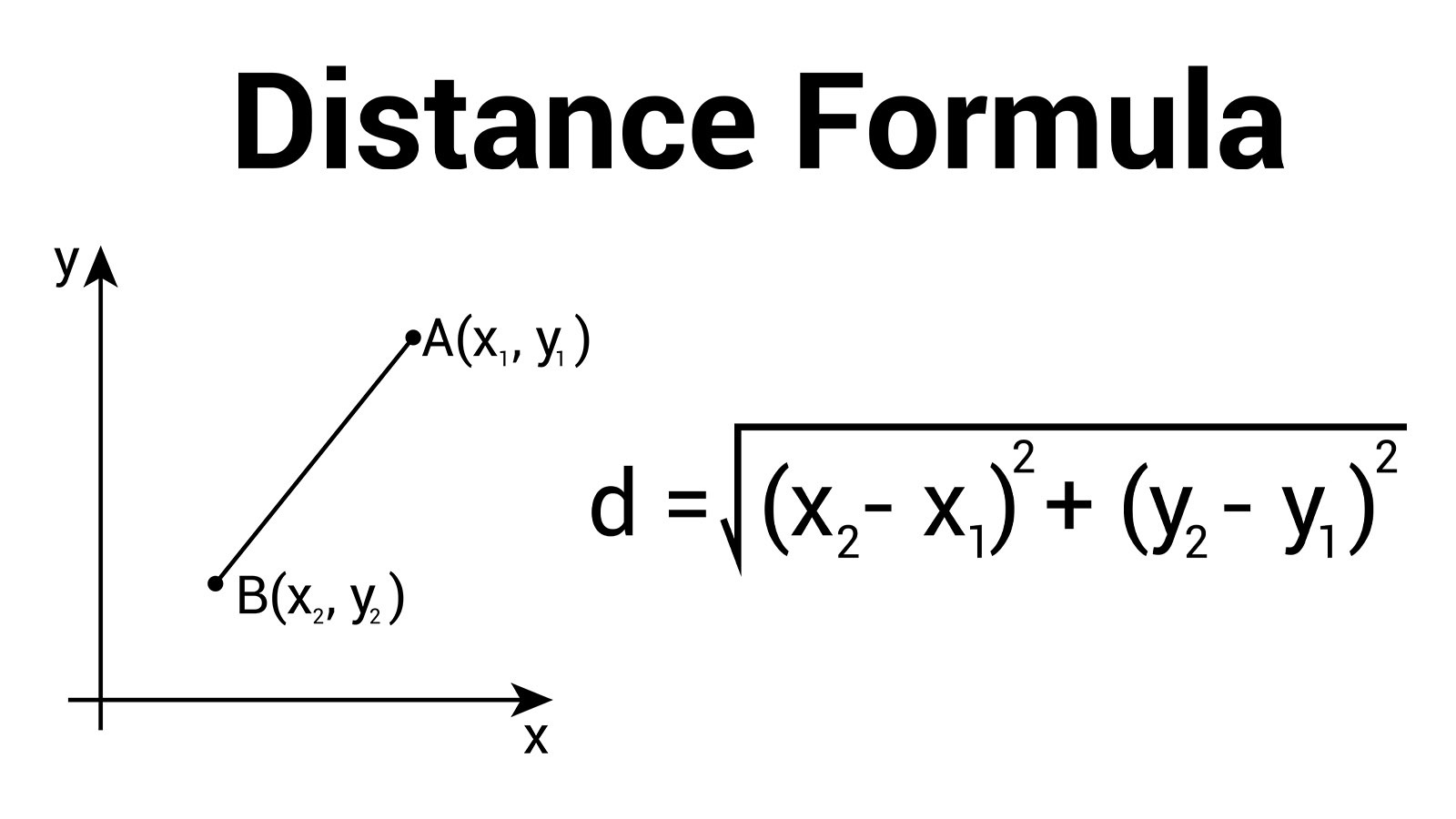In the world of digital imaging, image distance refers to the measurement between objects in an image. This concept can apply to physical distances captured in photographs or be relevant in digital settings, where precise measurements are crucial. For beginners, understanding image distance can seem technical, but it’s quite approachable with the right tools and methods. Let's explore why calculating image distance is important and break down the basics.
Why Calculating Image Distance Matters

Calculating image distance is essential for many reasons, especially in fields like photography, design, and digital editing. Here are a few key reasons why measuring image distance accurately is valuable:
- Accurate Dimensions: Measuring distance allows for realistic scaling and accurate spatial representation in images.
- Improved Editing: Knowing exact distances aids in precise edits, making it easier to resize, crop, or adjust elements without distortion.
- Professional Results: Accurate measurements can make images look more professional, especially for marketing, advertising, or educational purposes.
- Enhanced Perspective: Calculating distance can help maintain perspective, so objects appear naturally placed within a scene.
Overall, knowing how to calculate image distance can improve visual quality, aid in design accuracy, and enhance the viewer’s experience.
Also Read This: How to Join Rumble and Create Engaging Content
Basic Concepts of Image Distance

Before diving into methods and tools, it's helpful to understand a few foundational concepts of image distance. Here are some basic terms to familiarize yourself with:
| Term | Definition |
|---|---|
| Focal Point | The point where light rays converge in an image, often used in photography and digital imaging. |
| Perspective | Refers to the spatial relationship between objects in an image, affected by the distance between the camera and the objects. |
| Scale | A measure of size in an image relative to real-world dimensions, helping to achieve realistic proportions. |
With these concepts, you'll have a clearer idea of how distance impacts an image and why it's a critical aspect to master in digital imaging.
Also Read This: how to print multiple images on one page mac
Common Methods for Measuring Image Distance
Measuring image distance can be done using various methods, each suited to different contexts and tools. Understanding these methods will help you choose the right approach for your needs. Here are some common methods:
- Grid Method: Place a grid over the image to help estimate distances based on known dimensions of the grid squares. This is useful in both digital and physical images.
- Ruler or Measuring Tape: For physical objects, using a ruler or measuring tape can provide direct measurements. This method works best in controlled settings.
- Software Tools: Many photo editing software programs have built-in measuring tools. These can help you measure distances and angles precisely. Examples include Adobe Photoshop and GIMP.
- Reference Objects: Use objects of known size as reference points to estimate distances in the image. For example, if a coin is visible in the image, you can use its diameter to gauge distance.
Each method has its strengths and limitations, so it's essential to choose one that fits your specific situation. The grid method is great for rough estimates, while software tools offer precision.
Also Read This: Shutterstock Affiliate Program: Earning Opportunities and Benefits for Promoting Shutterstock Images
Step-by-Step Guide to Calculating Image Distance
Calculating image distance doesn't have to be overwhelming. Here’s a simple step-by-step guide to help you through the process:
- Identify Your Subject: Choose the objects in the image whose distance you want to measure.
- Choose Your Method: Select one of the methods discussed earlier that fits your needs.
- Take Measurements: If using software, select the measuring tool and drag it between your subjects. If using a ruler or grid, measure manually.
- Record Distances: Write down your measurements for reference, ensuring accuracy.
- Check Your Work: Double-check your calculations to avoid any errors that could affect your final image.
By following these steps, you can confidently measure image distances, enhancing your photography or digital design projects.
Also Read This: How to Use Adobe Behance for Creative Professionals
Tools for Measuring Image Distance
Having the right tools can make measuring image distance a breeze. Here’s a rundown of some helpful tools you can use:
| Tool | Description |
|---|---|
| Digital Calipers | A precise measuring tool ideal for physical objects, allowing for accurate distance readings. |
| Photo Editing Software | Programs like Adobe Photoshop or GIMP include measurement tools for accurate distance calculations in digital images. |
| Measuring Apps | Mobile applications such as Measure (iOS) or Google Measure (Android) use augmented reality to help measure distances in real-world settings. |
| Protractor | A tool to measure angles, which can also help in determining distances based on the angle of view. |
Using these tools can simplify the measuring process, whether you're working on physical images or digital designs. Choose the tools that best suit your projects, and you’ll be on your way to mastering image distance calculations.
Also Read This: Effective Ways to Reduce Image File Size on iPhone
Tips for Beginners
Starting out in measuring image distance can feel a bit daunting, but with the right tips, you'll find it easier to navigate. Here are some helpful pointers to get you going:
- Practice Regularly: Like any skill, the more you practice, the better you'll get. Start with simple images and gradually work your way up to more complex ones.
- Use Clear Reference Points: When measuring distances, always use objects with known dimensions as reference points. This will help improve your accuracy.
- Experiment with Different Methods: Try out various measuring methods to see which one feels most comfortable for you. Each method has its strengths, so find what works best.
- Check Your Work: Always double-check your measurements. It’s easy to make mistakes, especially when working quickly.
- Learn from Others: Don’t hesitate to look for tutorials or ask for advice from experienced photographers or designers. They often have great insights to share.
By following these tips, you’ll build your confidence and skills in measuring image distance. Remember, practice makes perfect, so keep experimenting!
Also Read This: A Step-by-Step Guide on Tiktok Photo Download in HD
Frequently Asked Questions
As you dive into measuring image distance, you might have some questions. Here are a few commonly asked questions that can help clarify things:
- What is the best method for beginners? The grid method is often the easiest for beginners, as it provides a visual guide for measurements.
- Can I measure distance in a digital image without special tools? Yes! You can use software that has built-in measuring tools, or even use a simple ruler if you print the image.
- How accurate do my measurements need to be? It depends on your project. For casual photography, a rough estimate may be sufficient, but for professional work, strive for high accuracy.
- Is it necessary to use reference objects? While not mandatory, using reference objects greatly enhances your measurement accuracy and helps scale your images effectively.
If you have more questions, don’t hesitate to seek out resources or communities online that can provide additional help.
Conclusion
Understanding and calculating image distance is a valuable skill that can significantly enhance your photography and design work. By grasping the basic concepts, exploring common methods, and utilizing the right tools, you can create more professional-looking images. Remember, practice and patience are key, so don’t rush the learning process. As you gain experience, you’ll find that measuring image distance becomes second nature. Keep experimenting and refining your skills, and soon you'll see the difference in your work!

 admin
admin








